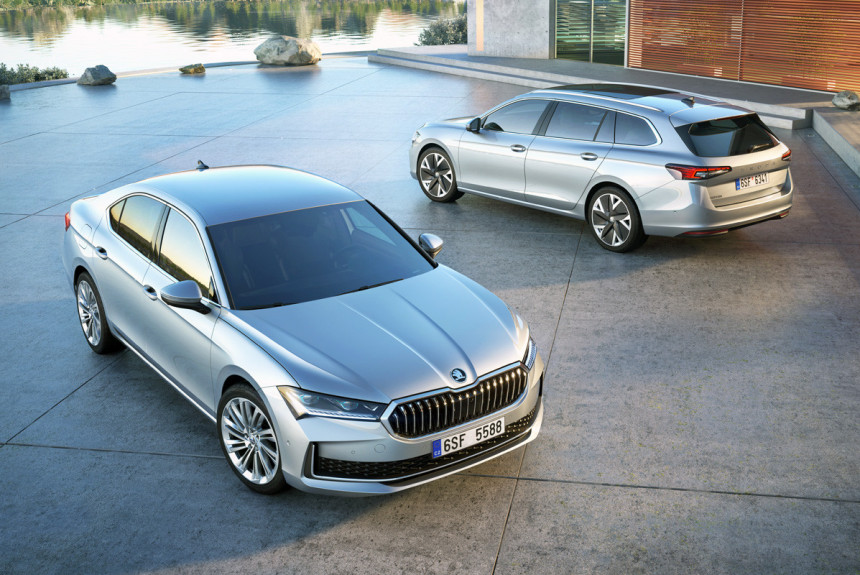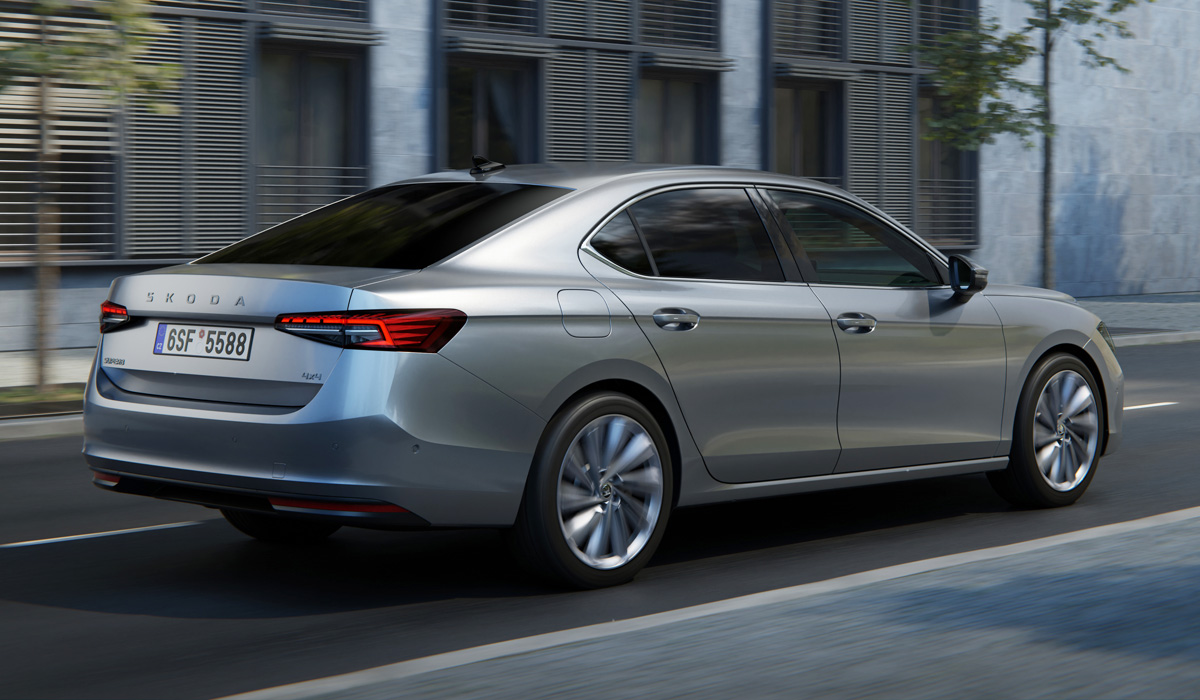
Apart from the cars produced before the Second World War, in the recent history of Skoda, this is the fourth generation of the flagship Superb model. And appreciate the turn of history: the first modern Skoda Superb of the 2001 model was a kind of long-wheelbase Volkswagen Passat B5 sedan, and the newest “fourth” Superb itself became a donor for the B9 generation Passat. Yes, the Volkswagen-branded car debuted two months ago, but it was Skoda that was engaged in the development of this family. And if the Passat B9 is only a station wagon, then the Superb traditionally offers a choice of two body types: liftback and station wagon.

Skoda has followed the path of evolution: both the corporate design and the modular MQB platform (now in the modern iteration of Evo), and even the wheelbase size (2841 mm) have been preserved. But all the exterior body panels are new, the optics have become more compact, and in addition, the tilt of the windshield has been slightly increased. In the liftback, the drag coefficient Cd has been reduced by 10% (now 0.23), and in the Combi version — by 15% (up to 0.25).

The base Superb has added 43 mm in length (up to 4912 mm) and 12 mm in height (up to 1481 mm), and the station wagon has become 40 mm longer (4902 mm) and 5 mm higher (1482 mm) than its predecessor. At the same time, the width in both cases has been reduced by 15 mm (now 1849 mm). The range of wheels is from 16 to 19 inches in diameter. The already huge trunk is now even more spacious: the volume of the liftback compartment has increased from 625 to 645 liters, and the Combi version — from 660 to 690 liters.
The interior has become even more spacious and comfortable, although the main increase is in the space above the heads of the riders (plus 6-11 mm on different rows of seats). The new front panel has camouflaged ventilation deflectors, and the devices are now virtual (a 10-inch screen is already in the basic configuration), but covered with a visor. Among the options, a full-fledged projection on the windshield appeared for the first time, the media system can have a “TV” with a diagonal of 10 or 13 inches (although the Passat has 13 or 15 inches).
The DSG gearbox is now controlled by the right steering wheel switch: there will be no more versions with “mechanics”, and the left lever is responsible for the turn signals and windscreen wipers. Outdoor light control is now push-button. The box on the central tunnel has built-in wireless charging for smartphones: it has a power of 15 watts and cooling. There are three new gadgets from the Simply Clever brand list (now there are 28 of them) — an electric luggage curtain (only for the station wagon), double pockets on the back of the front seats and a tablet mount in the rear center armrest.
Unlike the Passat, the Superb has retained the classic climate control unit with three rotating handles. But this remote control is now called Skoda Smart Dials: displays are built into the handles, and these are not just illuminated sections, but full-fledged color matrices with a diameter of 32 mm. The central handle is multifunctional and can be responsible for fan speed, flow direction, air conditioning modes, audio system volume, switching driving modes or zooming the navigation map. Switching between functions is carried out by pressing the handle for a long time, and you can program a set and sequence of these functions (no more than four at a time) in the media system.
The main update of the MQB Evo platform is the optional adaptive suspension DCC Plus. The new shock absorbers have two controlled valves (separately for compression and rebound) instead of one, so the difference between comfort and sports modes should become more obvious. Such a suspension is normally placed in the top version under the traditional name Laurin & Klement. Its other features are a combined interior upholstery (leather and leatherette), expensive front seats (with ventilation and massage), a Canton audio system with fourteen speakers, as well as matrix headlights.

The motor range of the Passat and Superb are almost identical, but the Skoda has fewer variations in power. For example, the 2.0 TDI turbodiesel is offered only in two boost versions (150 or 193 hp), although the Passat also has the simplest version with 122 forces. Cars with a 150-horsepower engine have front-wheel drive, and more powerful Superbugs are all-wheel drive (with a clutch on the rear axle).

There are two pure gasoline versions — they have a 2.0 TSI turbo engine with a capacity of 204 hp (front-wheel drive) or 265 hp (all-wheel drive). A “soft hybrid” has been added to the range for the first time: he has a 1.5 eTSI gasoline turbo engine (150 hp, 250 Nm) supplemented with a system for shutting off half of the cylinders at low loads and a 48-volt starter generator with a belt drive. All the listed petrol and diesel versions have a seven-speed DSG “robot” with two clutches.

There is also a rechargable hybrid in the range, but now it can only be a Superb Combi station wagon, because such power plants are in demand mainly in Western European countries, and there Supercars prefer it with a cargo and passenger body. The hybrid has a 1.5 TSI turbo engine (150 hp) and a six-speed DSG robot, which has an electric motor built into it. The peak power of the system is 204 hp (although the Passat also has a 272-horsepower version), but the drive is only front-wheel drive. The capacity of the traction battery is 25.7 kWh versus 13 kWh for the hybrid of the previous generation, and the range in the electric mode exceeds 100 km on the WLTP cycle.

The new Superb will appear on the European market only in the spring of 2024, so prices have not yet been announced. The outgoing model in its native Czech Republic now costs from 881,000 crowns (36,000 euros or 3.6 million rubles at the current exchange rate). By the way, the new generation cars will be produced not in the Czech Republic, but in Slovakia — on the same conveyor with the Passat.